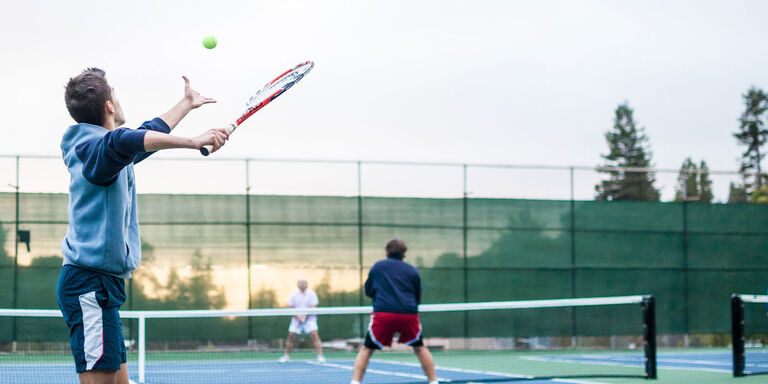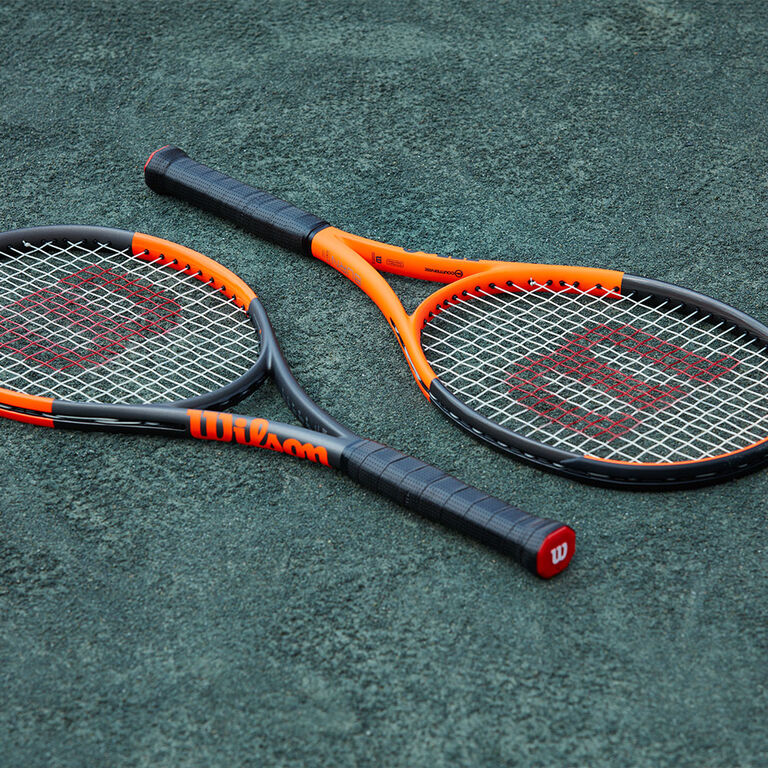
Christy Sports – Tennis Racquet Buying Guide
How to Choose the Right Tennis Racquet
If you’re like most people who play tennis regularly, you think of the racquet as an extension of your arm, and even a small change in string tension, weight, or balance will throw off the forehand you’ve been trying to perfect. You probably already know roughly the head size, power level and balance that is best for you and your swing. But for the many players who haven’t bought a new racquet before or haven’t played in years, this guide will help you pick the best racquet for your needs!

THE PLAYER
Do you have long sweeping swings that generate a lot of power? In that case you may want a racquet that focuses on more control. If you have short compact swings, you may want a racquet that generates a lot of the power for you.
Do you play at the baseline and like to use that big swing on forehands and backhands? Or do you enjoy being at the net and attacking? Maybe you want a racquet with a larger head to help you with your volleys. Or maybe you want a lighter racquet for the quickest reaction time.
There is a lot to consider before you even start thinking about racquets. Think about the type of player you are first.
A Tip from a Wannabe Pro: I always worried that as I got older, I would need a racquet that would produce more power for me. But this isn’t always true! Don’t go from one of the racquet spectrum to the other just because you reach a certain age and want to play a different style. In my experience, after being used to a certain kind of racquet and having the same style of swing for decades, switching to a high power, short compact swing did not help my tennis game. Make moderate changes and know that there’s a reason most of the best selling racquets aim to please the players in the middle. -Jin

THE RACQUET
There are a lot of numbers when looking at a racquet these days; stiffness, power level, grip size, head size, head balance, length, weight, some of these terms may be new to you. However, the basic specifications are still the most important, and that includes grip size, head size and weight.
Head Size: The head size of the racquet is usually between 95 and 110 square inches. Of course, there are small and larger options, but the majority will fall in this range. Smaller head sizes tend to be more precise with greater control, and offer less room for error. Larger head sizes generate more power and give you more surface area for hitting the ball. To offer some perspective, think of a small trampoline versus a large one. Which one will shoot you higher into the air?
Weight: Racquets generally range from 9 ounces to 11. A heavier racquet will provide more power but is slightly harder to get moving (think of a big hammer). A lighter racquet is easier to manipulate, so it offers more control but less power (think of a tiny hammer).
Grip Size: The rule of thumb used to be to hold the racquet and see if your thumb covers the fingernail on your index / pointer finger. There are also many charts on the internet that will tell you what your grip size should be.
A Tip from a Wannabe Pro: However, I was also told I should have a grip size 4 (4 ½) or 5 (4 5/8) while growing up. So I ended up with a racquet that was a size 5. HUGE mistake because there’s no way to downsize it. If I wanted to change my grip around, or use an overgrip, it would take a long time to adjust to having such a massive handle. If I could do it over again, I would have started with a much smaller grip size. That way, I could build it up. -Jin


